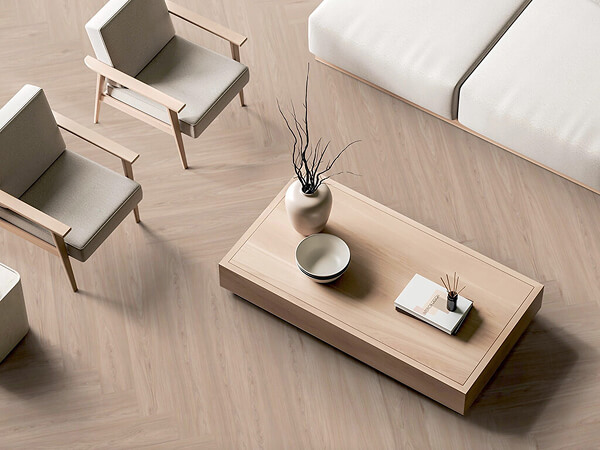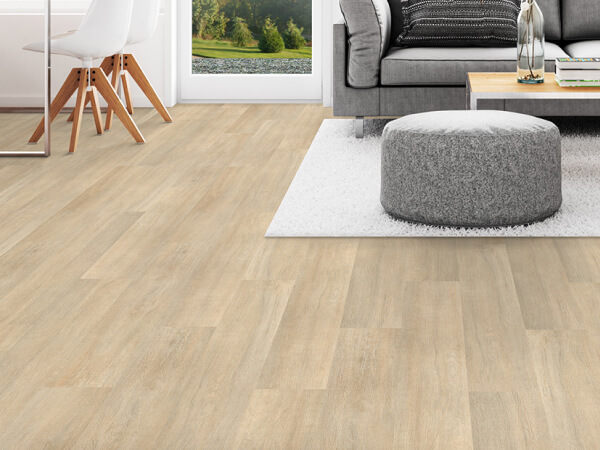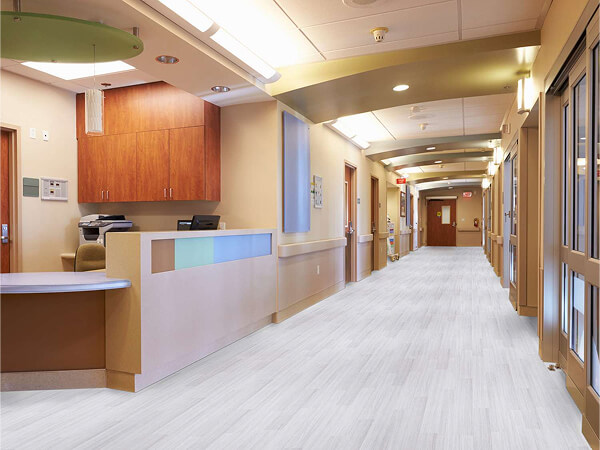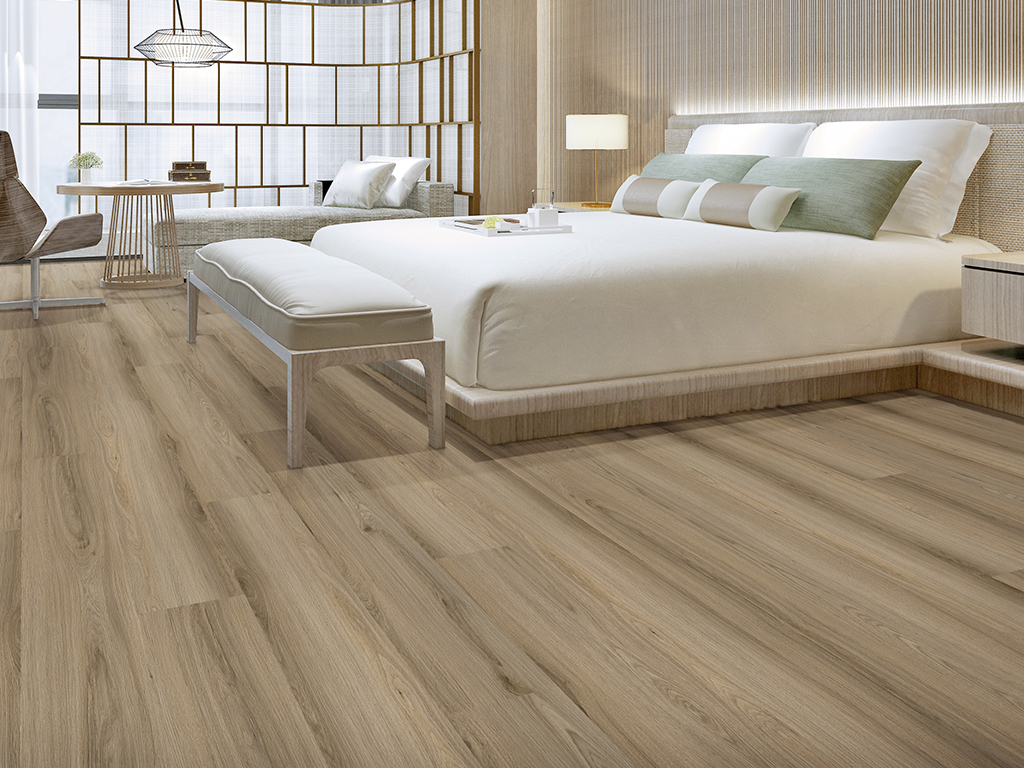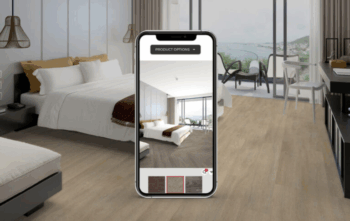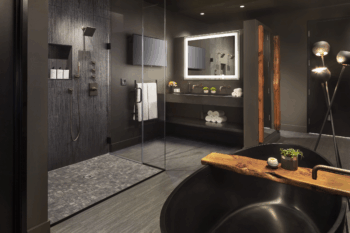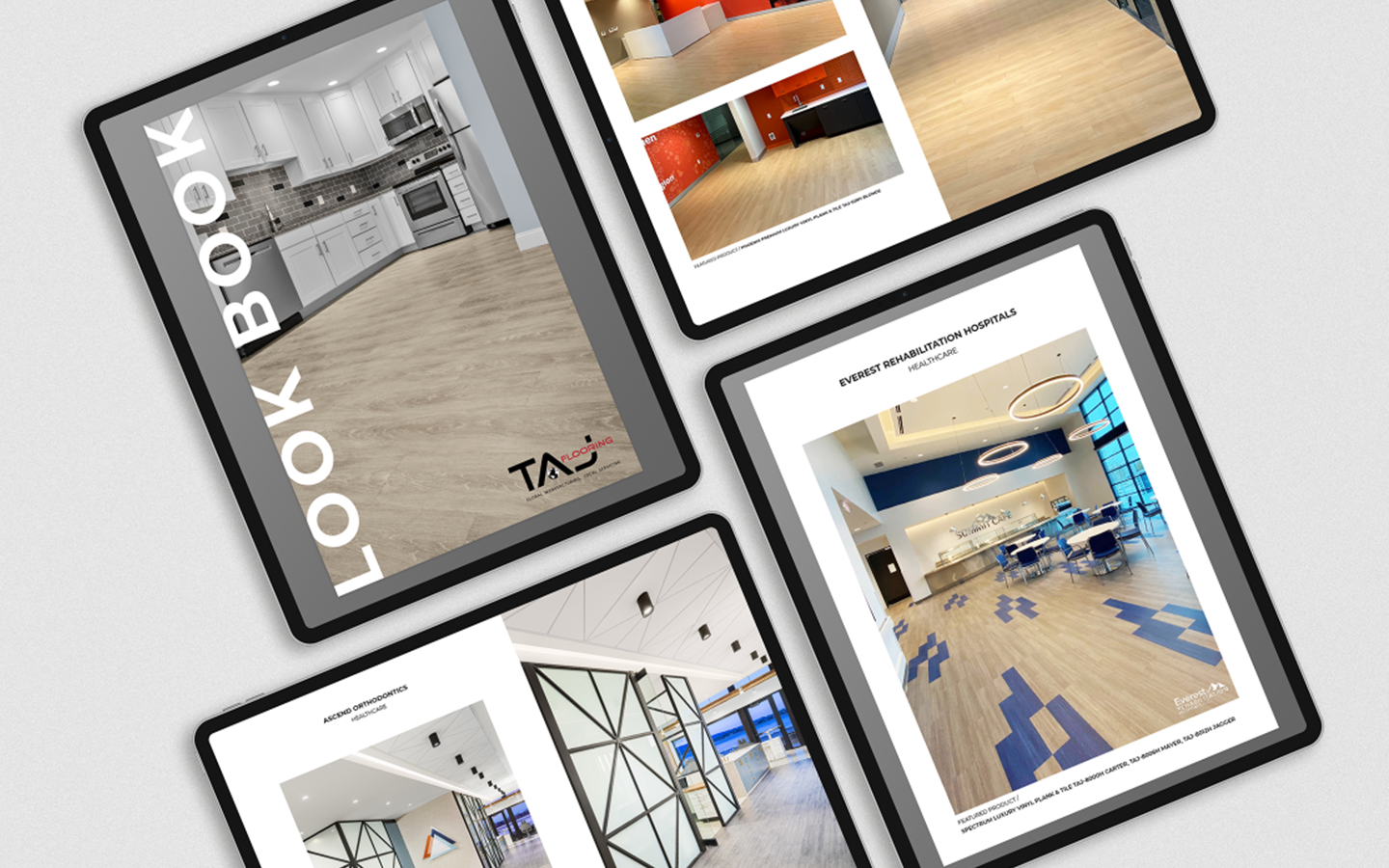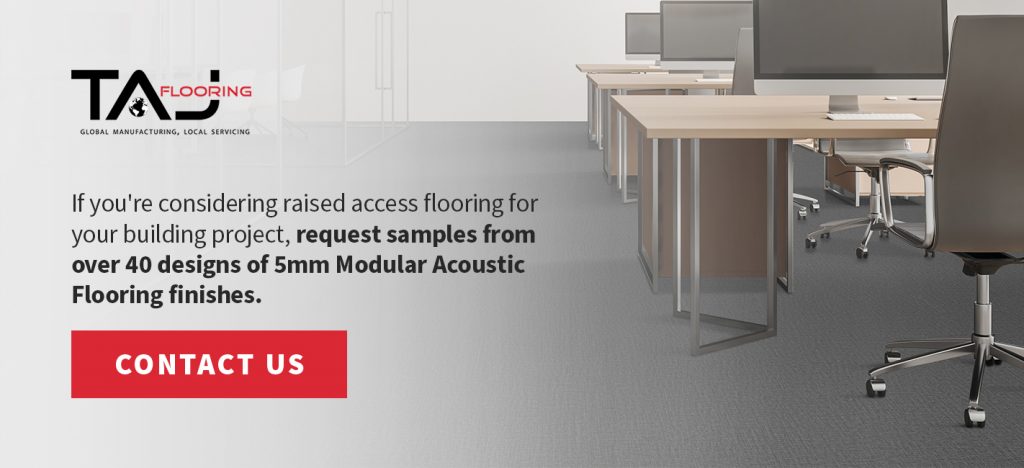Raised Access Flooring: Benefits & Applications
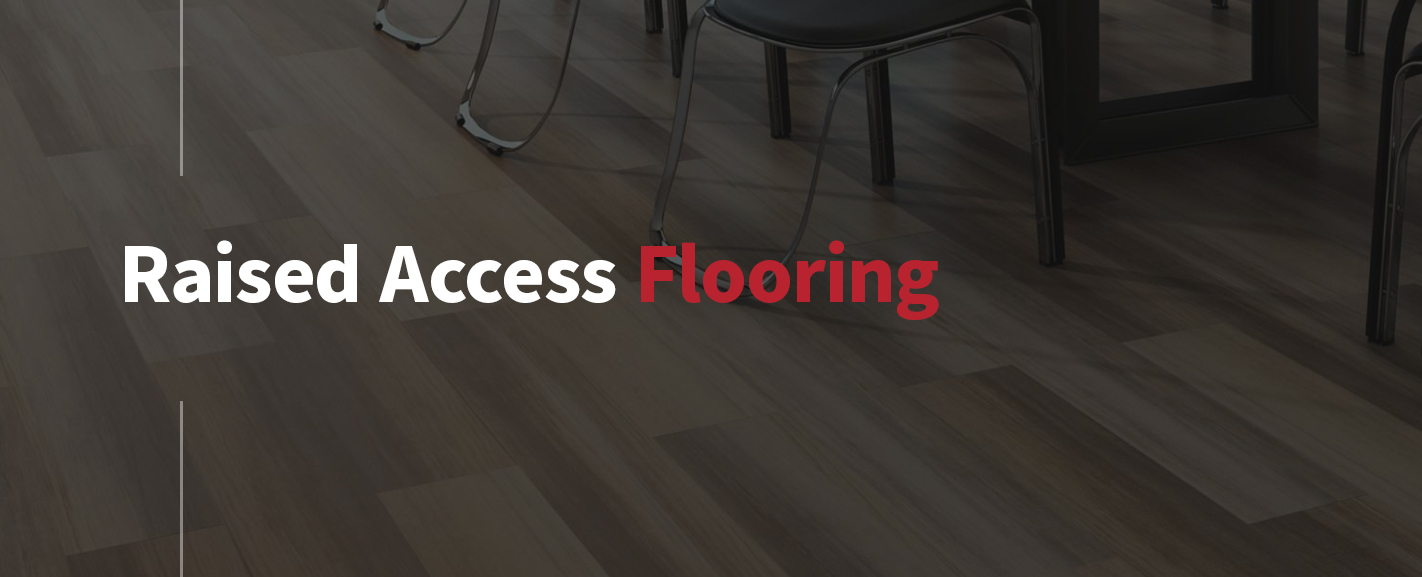
The need for raised access flooring dates all the way back to the early 1960s when computers were oversized and used a lot more power than they do today. These computers and other new technology got the industry talking about environmental concerns that came with the necessity of cooling these machines effectively and safely.
The solution was a flooring system that made circulation, organizing wires and load-bearing possible. This raised access flooring system has only evolved over the years and even though computers are much smaller today, they come with similar concerns as the initial machines in the ’60s.
What Is Raised Access Flooring and How Does It Work?
As its name suggests, a raised access floor is one that sits above the existing flooring. The space between the two flooring surfaces is meant to be used for running wires and cables as well as to allow ventilation.
The hollow space between the floors — which is called the plenum — can range in size based on how many cables are traveling through and what sort of access you may need. Organizations such as data management centers are more likely to opt for more space to ensure the numerous cables can run through the plenum and still leave enough room for airflow.
Traditional corporate offices won’t need as big a plenum and may choose to have a smaller space to meet their minimum needs.
The plenum is also used in industries like healthcare to run HVAC, plumbing or wiring throughout the building without resorting to overhead cable systems.
There are two common types of raised access flooring:
- Full-height access floors: These floors are anywhere from 6 inches to 6 feet, but are typically about 12 inches. They provide the most space between the floorings and are great options for new buildings. The large plenum means the gamut of cabling can run through the floor and still leave enough room for airflow and basic access as needed.
- Low-profile raised floors: Low-profile floors are 6 inches or lower and are best suited for buildings that are getting renovated. Low-profile accessed flooring benefits include ease of access to routed wires and cables while still adhering to any floor-to-ceiling height restrictions.
A series of supports hold the raised flooring up, and the floor finish used in place may feature various material types such as ceramic, stone, wood, carpet tile, and — more so trending today — luxury vinyl flooring.
Benefits of Access Flooring and the Use of Luxury Vinyl
As mentioned above, raised access flooring has several benefits, though the selection of the finish is also just as important as the structure. The use of luxury vinyl flooring offers several features to the overall access flooring system, such as:
- Limitless Designs: From wood- and stone-looking visuals to concrete, textile and abstract patterns, luxury vinyl flooring offers natural-looking finishes with the durability and flexibility of luxury vinyl.
- Weight and Thickness: A key benefit of using luxury vinyl over other materials and finishes is its overall weight. Luxury vinyl is lighter overall than most hard surface finishes like concrete, stone and ceramic tile.
- 5mm Loose Lay Options Available: Luxury vinyl 5mm loose lay formats offer a non-slip backing for easy application with minimal adhesive. Releasable adhesives are also available for application to access flooring systems, much like modular carpet tiles, though with the benefits of luxury vinyl such as cleanability and maintenance. In addition, by using a 5mm loose lay luxury vinyl product, the overall thickness hides the telegraphing of access panel frames.
- Acoustic Benefits: Workplace distractions result in poor performance, low productivity and reduced motivation. With an IIC rating of 57 and STC rating of 62, our 5mm luxury commercial flooring is ideal for reducing sound transmission to help provide a quiet environment.
- Easy to Clean and Maintain: Cleanliness is critical in healthcare facilities, and raised access flooring — especially that using luxury vinyl — is extremely easy to clean and disinfect. Because of its non-porous structure, you can incorporate the look and aesthetic of wood or textiles without worrying about the maintenance involved.
- Naturally Antistatic: Since access flooring systems are commonly used in data or electrical rooms, static electricity is a factor to consider when selecting a finish. Luxury vinyl is naturally antistatic.
Our Solutions
When it comes to raised access flooring, TAJ offers a top-quality selection of luxury vinyl design finishes. Today’s most popular flooring options for raised access floor are designs from our 5mm modular acoustic flooring collections, Wavelength and Color Infused.
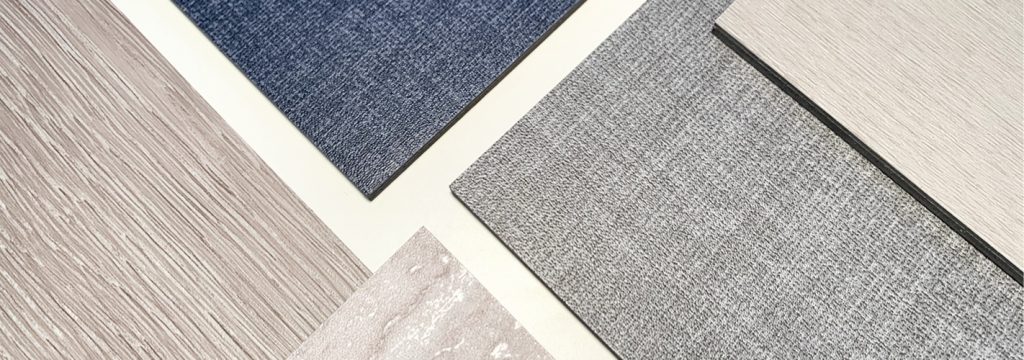
Wavelength: As a solution for acoustic challenges in commercial interiors, the Wavelength collection features 25 5mm loose lay vinyl plank and tile variations. From contemporary wood looks to linear abstract and linen-like textural designs, Wavelength modular options offer sound absorption benefits, a non-slip loose lay backing, and the durability and performance of fiberglass-reinforced vinyl.
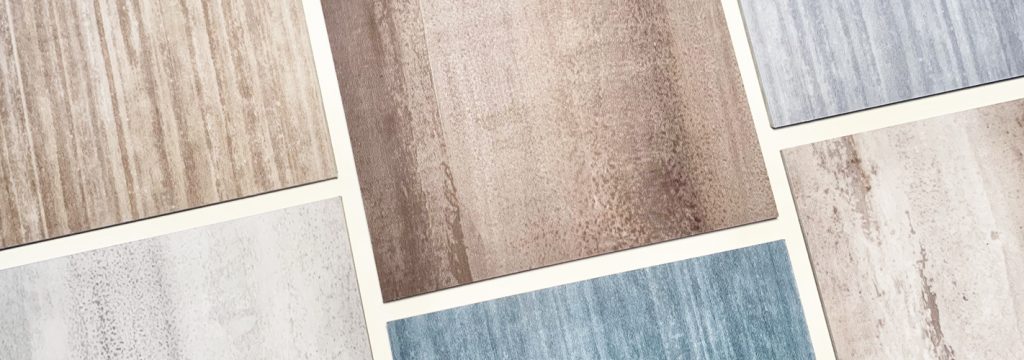
Color Infused: The Color Infused collection features bold patterns and colorways to complement your commercial area’s unique aesthetic. The luxury vinyl plank and tile coordinate with each other and provide a splash of color to your project. Our sturdy modular construction gives you the proper noise reduction without additional underlayment.
Request Complimentary Samples
If you’re considering raised access flooring for your new or retrofit building project, take advantage of top-quality flooring finish options available from TAJ Flooring. Get in touch to request a sample or call us for more information at 888-652-2111.

